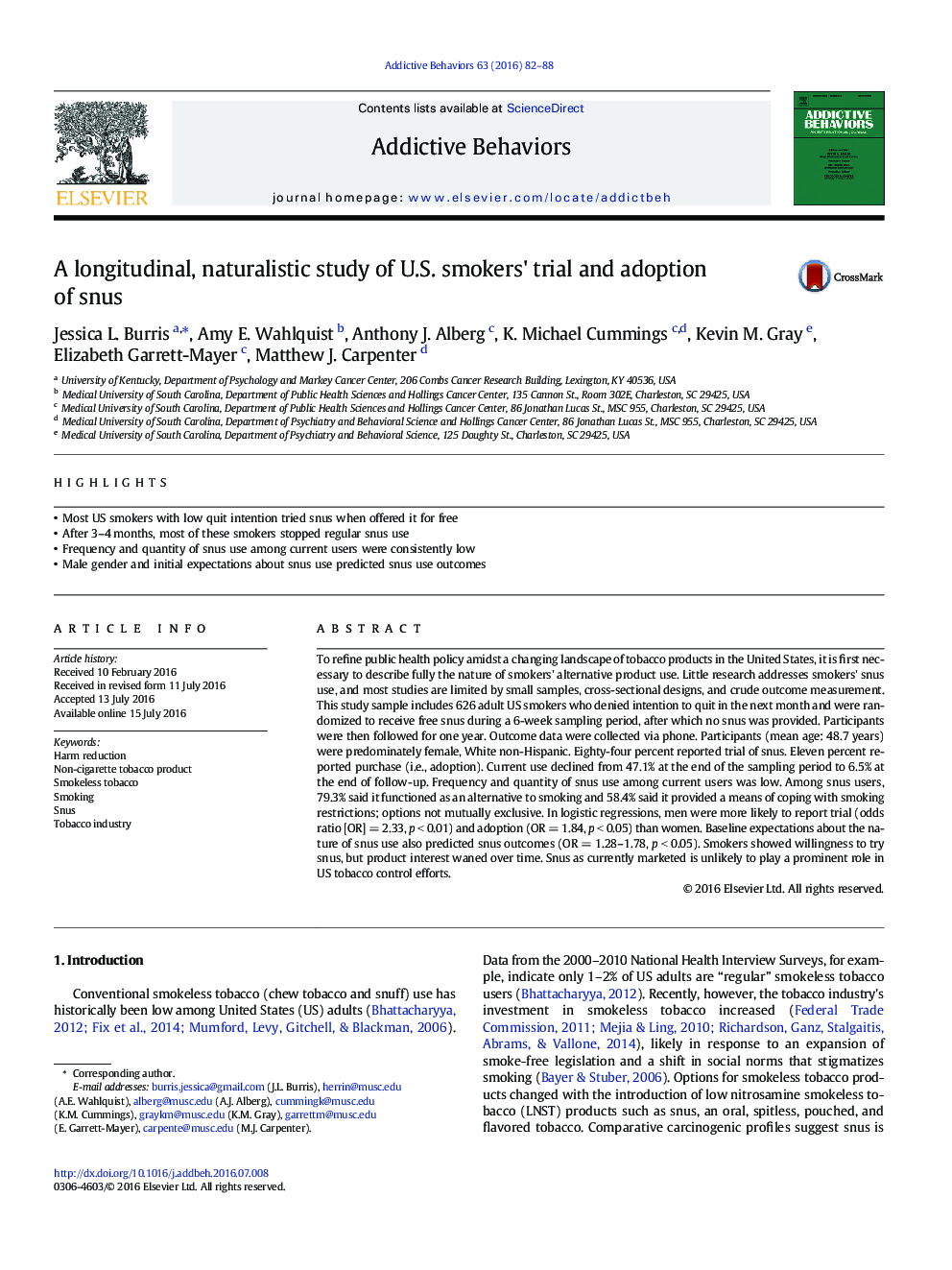| کد مقاله | کد نشریه | سال انتشار | مقاله انگلیسی | نسخه تمام متن |
|---|---|---|---|---|
| 898565 | 1472508 | 2016 | 7 صفحه PDF | دانلود رایگان |
• Most US smokers with low quit intention tried snus when offered it for free
• After 3–4 months, most of these smokers stopped regular snus use
• Frequency and quantity of snus use among current users were consistently low
• Male gender and initial expectations about snus use predicted snus use outcomes
To refine public health policy amidst a changing landscape of tobacco products in the United States, it is first necessary to describe fully the nature of smokers' alternative product use. Little research addresses smokers' snus use, and most studies are limited by small samples, cross-sectional designs, and crude outcome measurement. This study sample includes 626 adult US smokers who denied intention to quit in the next month and were randomized to receive free snus during a 6-week sampling period, after which no snus was provided. Participants were then followed for one year. Outcome data were collected via phone. Participants (mean age: 48.7 years) were predominately female, White non-Hispanic. Eighty-four percent reported trial of snus. Eleven percent reported purchase (i.e., adoption). Current use declined from 47.1% at the end of the sampling period to 6.5% at the end of follow-up. Frequency and quantity of snus use among current users was low. Among snus users, 79.3% said it functioned as an alternative to smoking and 58.4% said it provided a means of coping with smoking restrictions; options not mutually exclusive. In logistic regressions, men were more likely to report trial (odds ratio [OR] = 2.33, p < 0.01) and adoption (OR = 1.84, p < 0.05) than women. Baseline expectations about the nature of snus use also predicted snus outcomes (OR = 1.28–1.78, p < 0.05). Smokers showed willingness to try snus, but product interest waned over time. Snus as currently marketed is unlikely to play a prominent role in US tobacco control efforts.
Journal: Addictive Behaviors - Volume 63, December 2016, Pages 82–88
